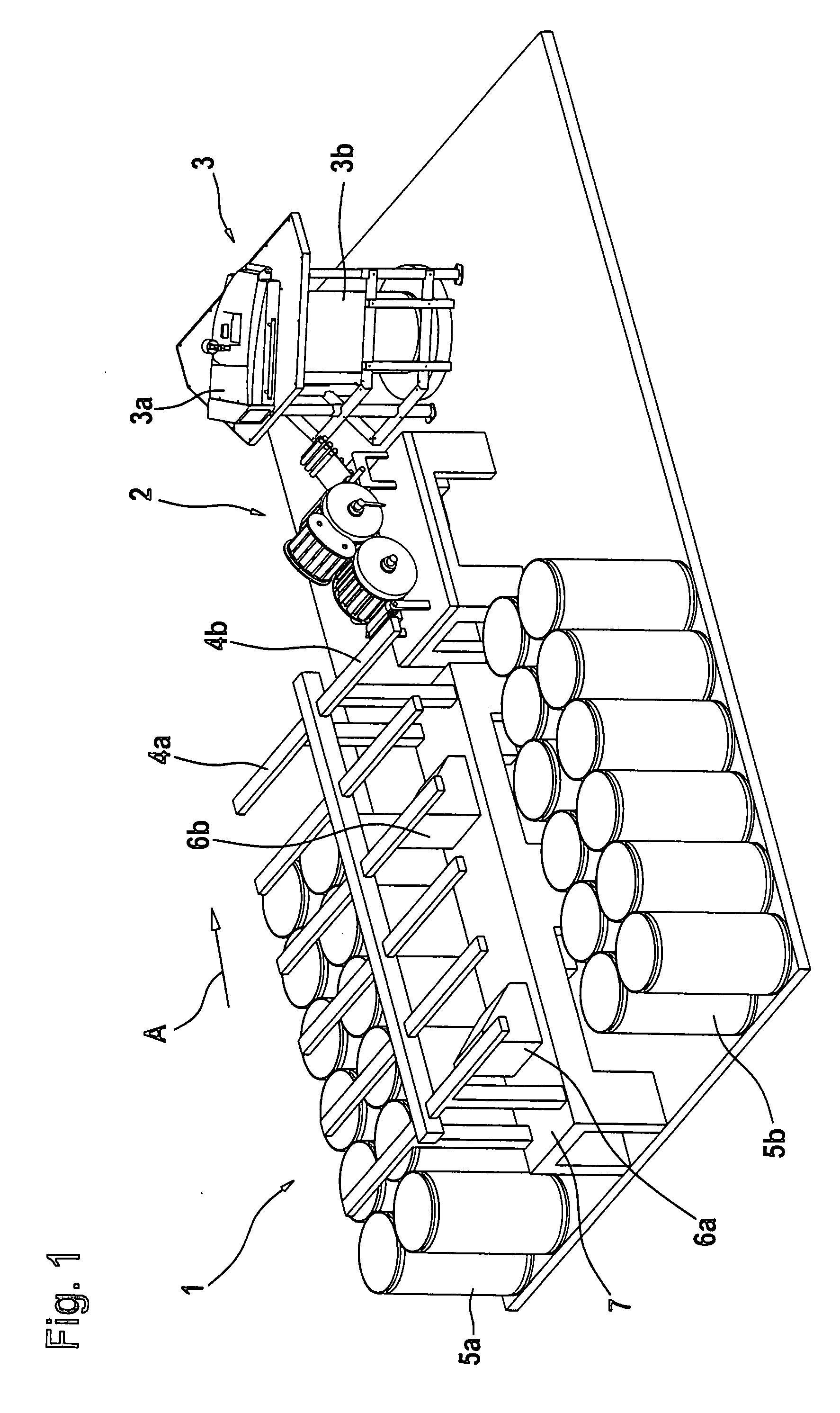Apparatus for the sorting or selection of a fibre sliver comprising textile fibres, especially for combing
a technology of textile fibres and sliver, which is applied in the direction of combing machines, textiles and papermaking, fibre treatment, etc., can solve the problems of high demands on the frame of the machine as well as the base, the back and forth swinging movement of the nipper assembly giving rise to very substantial vibration, and the continuous mode of operation. , to achieve the effect of improving the combed sliver and substantially increasing the amount of produced per hour
- Summary
- Abstract
- Description
- Claims
- Application Information
AI Technical Summary
Benefits of technology
Problems solved by technology
Method used
Image
Examples
Embodiment Construction
[0038]With reference to FIG. 1, a combing preparation machine 1 has a sliver-fed and lap-delivering spinning room machine and two feed tables 4a, 4b (creels) arranged parallel to one another, there being arranged below each of the feed tables 4a, 4b two rows of cans 5a, 5b containing fibre slivers (not shown). The fibre slivers withdrawn from the cans 5a, 5b pass, after a change of direction, into two drafting systems 6a, 6b of the combing preparation machine 1 which are arranged one after the other. From the drafting system 6a, the fibre sliver web that has been formed is guided over the web table 7 and, at the outlet of the drafting system 6b, laid one over the other with, and brought together with, the fibre sliver web produced therein. By means of the drafting systems 6a and 6b, in each case a plurality of fibre slivers are combined to form a lap and drafted together. A plurality of drafted laps (two laps in the example shown) are doubled by being placed one on top of the other....
PUM
 Login to View More
Login to View More Abstract
Description
Claims
Application Information
 Login to View More
Login to View More - R&D
- Intellectual Property
- Life Sciences
- Materials
- Tech Scout
- Unparalleled Data Quality
- Higher Quality Content
- 60% Fewer Hallucinations
Browse by: Latest US Patents, China's latest patents, Technical Efficacy Thesaurus, Application Domain, Technology Topic, Popular Technical Reports.
© 2025 PatSnap. All rights reserved.Legal|Privacy policy|Modern Slavery Act Transparency Statement|Sitemap|About US| Contact US: help@patsnap.com



